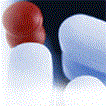Detailing ROI is falling, but sales forces keep growing

The pressure on pharmaceutical sales forces is growing. Physicians have less time to see sales representatives but are contacted by an increasing number as pharmaceutical sales forces expand. Therefore, reps are spending an increasing proportion of their time trying to gain access to physicians rather than actually detailing. Unsurprisingly, the return on investment in the sales function is declining.
However, rather than increasing the efficiency of their existing sales force, many companies are seeking to increase their share of voice simply by increasing their sales forces. This fuels further sales force growth by competitors and sets up a vicious circle of spiraling sales force growth coupled to falling ROI. Datamonitor believes that further sales force growth will only be effective if companies first invest in new strategies to improve productivity.
Datamonitor's new report, Sales Force Structures and Strategies 2001: A Case Study Analysis of Effective Sales Force Management, reveals:
- Even if more than ¾ of companies interviewed will expand their sales forces by 2005, to date, such growth has not been accompanied by improvements in field force productivity
- Many pharmaceutical companies are not structuring their sales forces optimally, following country-specific factors first, instead of their marketed portfolio
Even if more than ¾ of companies interviewed will expand their sales forces by 2005, to date, such growth has not been accompanied by improvements in field force productivity
Between 1999 and 2001, 64% of the 40 sales forces profiled by Datamonitor increased in size, with an average sales force growing by 21%. In particular, five pharmaceutical companies profiled in the US (Pfizer, Novartis, Bayer, Boehringer Ingelheim and ICN) increased their sales forces by an average of 42%. Sales force growth is typically attributed to the need to support new product launches and to maintain the company's share of voice in highly competitive markets. The result is even greater competition for the time of increasingly pressured physicians. 77% of companies interviewed by Datamonitor were planning to expand their sales forces further by 2005, so this competition can only increase.
Between 1995 and 2000, the amount of time spent with sales reps by the average US physician decreased from 12 minutes to 7 minutes per day. Only 20% of physicians increased the number of reps seen daily over the same period, despite the significant growth in total sales force headcount, implying that each rep is making fewer successful physician visits. Meanwhile, large US practice management companies are increasing the pressure on physicians to reduce the time devoted to activities not directly related to patient care. As a result, sales force ROI is in decline as reps spend more time attempting to gain detailing appointments than making productive visits. If ROI is to be improved, companies must identify new ways of meeting the needs of their target audiences and must tailor their detailing programs according. Companies that fail to improve their productivity will experience further ROI decline if sales forces continue to grow at existing rates.
The following figure illustrates historical and future sales force growth of 40 profiled companies in seven countries.

Source: Datamonitor
Many pharmaceutical companies are not structuring their sales forces optimally, following country-specific factors first, instead of their marketed portfolio
Best practice analysis identified companies' marketed portfolios should be the primary influence on sales force structure. For instance, Pfizer's US, German and Spanish sales forces reflect the impact of recent M&A activity, co-promotion agreements and market specific requirements, but are only slightly different in their structures. Pfizer splits each sales force primarily by target audience with between 76% and 85% of the field force devoted to general detailing. In all countries, the general detailing force is further subdivided by overlapping therapy areas, reflecting the broad target audience for Pfizer's marketed portfolio, which is dominated by cardiovascular, CNS and infectious diseases products. Similarly, Boehringer Ingelheim in the US, Italy and France devotes the majority of its sales forces to primary care detailing, while focusing between 3% and 6% on detailing HIV specialists, promoting its antiviral Viramune (nevaripine).
If sales force ROI is to be maximized, country-specific elements must be superimposed upon the optimum global structure. The key difference between Pfizer's three sales forces is the focus of the 15–24% of reps not devoted to general detailing. In the US these reps target managed care organizations, while in Germany and Spain they target hospital and specialist physicians, a role incorporated into Pfizer's general detailing force in the US. As another example, while 5% of Boehringer Ingelheim's US sales force is devoted to detailing MCOs, 7% of the French sales force is directed to promoting a portfolio of 14 OTC products. In Italy, 22% of the sales force is comprised of a contract sales force to boost its share of voice in promoting BI's range of respiratory products.
While the majority of companies profiled closely match their structure with their marketed portfolio, Datamonitor has identified that small and medium sized pharmas often do not structure their sales forces in the optimum way. Solvay, for example, has three different sales force structures in Italy, France and the UK. This reflects both the small size of the sales forces and differences in the opinion of regional managers as to the best sales force structure for Solvay's portfolio.
Datamonitor Analyst Dr Neal Hansen comments: "With country-specific elements superimposed on an optimum global structure, each sales force can meet the specific needs of its target audience both efficiently and effectively."
For further information, please contact Elisabeth Overend-Freeman at efreeman@datamonitor.com . Sales Force Structures and Strategies 2001 is available from Datamonitor, priced at $5,800.
Datamonitor is an independent market analysis firm that publishes a wide portfolio of strategic business information. Datamonitor has expertise in the following industry sectors: Automotive & Transport; Consumer; Financial Services; Healthcare; Industrial; Medical Devices; Technology. Datamonitor can be contacted at 212-686-7400 or visit www.datamonitor.com.
Source: Datamonitor
Subscribe to our free e-mail newsletter.
Click for a free Buyer's Guide listing.
